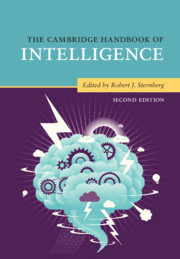Book contents
- The Cambridge Handbook of Intelligence
- The Cambridge Handbook of Intelligence
- Copyright page
- Dedication
- Contents
- Figures
- Tables
- Contributors
- Preface
- Part I Intelligence and Its Measurement
- Part II Development of Intelligence
- Part III Intelligence and Group Differences
- Part IV Biology of Intelligence
- Part V Intelligence and Information Processing
- 20 Basic Processes of Intelligence
- 21 Working Memory and Intelligence
- 22 Intelligence and Reasoning
- 23 Problem-Solving and Intelligence
- 24 Intelligence and Decision-Making
- 25 Artificial Intelligence
- 26 Intelligence and Video Games
- Part VI Kinds of Intelligence
- Part VII Intelligence and Its Role in Society
- Part VIII Intelligence and Allied Constructs
- Part IX Folk Conceptions of Intelligence
- Part X Conclusion
- Author Index
- Subject Index
- References
26 - Intelligence and Video Games
from Part V - Intelligence and Information Processing
Published online by Cambridge University Press: 13 December 2019
- The Cambridge Handbook of Intelligence
- The Cambridge Handbook of Intelligence
- Copyright page
- Dedication
- Contents
- Figures
- Tables
- Contributors
- Preface
- Part I Intelligence and Its Measurement
- Part II Development of Intelligence
- Part III Intelligence and Group Differences
- Part IV Biology of Intelligence
- Part V Intelligence and Information Processing
- 20 Basic Processes of Intelligence
- 21 Working Memory and Intelligence
- 22 Intelligence and Reasoning
- 23 Problem-Solving and Intelligence
- 24 Intelligence and Decision-Making
- 25 Artificial Intelligence
- 26 Intelligence and Video Games
- Part VI Kinds of Intelligence
- Part VII Intelligence and Its Role in Society
- Part VIII Intelligence and Allied Constructs
- Part IX Folk Conceptions of Intelligence
- Part X Conclusion
- Author Index
- Subject Index
- References
Summary
Video games can be useful tools for assessing intelligence and cognitive differences. First, available video games are grouped into thirteen genres defining their basic features. Second, empirical studies relating intelligence and video games are reviewed. Results show very strong correlations between intelligence and video game performance at the latent level, which suggests that the latter taps core facets of the intelligence concept. Third, regarding cognitive processes, studies have focused on “action video games.” Results have shown that video game experience (hours per week) correlates mainly with visuospatial cognition, perception, and attention. Fourth, key neural correlates of video game performance are also discussed. The final section enumerates required features for a video game to properly measure intelligence differences using a video game elaborated for research purposes (Forgotten Depths).
- Type
- Chapter
- Information
- The Cambridge Handbook of Intelligence , pp. 626 - 656Publisher: Cambridge University PressPrint publication year: 2020
References
- 3
- Cited by

